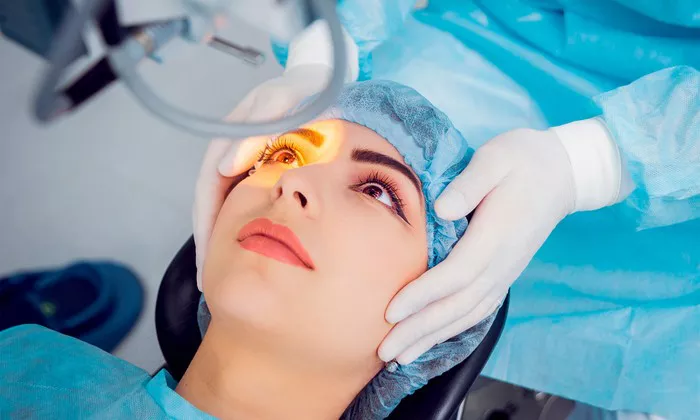Today, in a clinic situated on the 8th floor of a midtown office building, Iris, a 40-year-old engineer, nervously anticipates a transformative procedure: altering her eye color permanently. Dressed in an hourglass figure that moves gracefully, she embodies excitement tinged with anxiety. With a soft voice barely audible over the bustling waiting room nearby, she shares her anticipation for the imminent procedure where a laser will intricately modify her cornea, infusing it with a vibrant shade of blue. The cost? A mere 20 minutes and $12,000. “I’m going for an Alaskan-husky type of color,” Iris confides, underlining her desire for a striking and noticeable gaze.
Keratopigmentation (KTP), a technique that permanently changes eye color, has been a staple in European cosmetic clinics for over a decade and is now gaining traction in the United States. However, its availability remains limited, with only a handful of clinics offering the procedure, half of which are concentrated in the New York City metropolitan area.
The pioneer of KTP in America, Dr. Alexander Movshovich, not only holds credentials as a board-certified ophthalmologist but also boasts a keen eye as a photographer. His office, adorned with abstract glimpses of his photographic prowess, serves as a testament to his dual passions. Dr. Movshovich’s journey to introducing KTP to the U.S. began after decades of practicing retinal surgery and a chance encounter with a groundbreaking technique developed by his colleague, Dr. Francis Ferrari, in France. Inspired by the prospect of innovation, Dr. Movshovich opened Kerato in 2019, ushering in a new era of cosmetic eye enhancements.
Traditionally, methods for altering eye color have been fraught with imperfections. While colored contacts remain a safe option endorsed by the American Academy of Ophthalmologists (AAO), other methods such as iris implants and laser depigmentation come with significant risks and limitations. The quest for a safer and more customizable solution led to the development of KTP.
Despite its growing popularity, KTP remains unregulated by the FDA, prompting concerns about its safety and long-term effects. While practitioners like Dr. Movshovich assert the procedure’s safety based on their clinical experience, the AAO urges caution, citing potential risks including vision loss and infection.
While the debate over KTP’s safety continues, proponents remain optimistic about its potential. With ongoing research and advancements in technology, the future of cosmetic eye transformations appears promising. As Dr. Movshovich aptly puts it, “In America, everything is FDA questioned. You need some guts, and enough research to not be scared to do it.”


